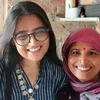Synergy: Exploring the connections between the different fields of art, design, and culture
Creativity has many manifestations, and these various forms can themselves interact, as these visual and performing artists show.
Art, design, and culture are aspects that permeate everything around us. Not only are they aesthetically linked to one another, but they are also synergistic and co-dependent. The three things they have in common are context, expression, and balance.
All three areas reflect the context of any society at a given time and express opinions and inspirations around that context. Balance ultimately plays a vital role as a binder, and the design field, in particular, strives to balance beauty and utility. Therefore, since both the root and the goal are the same for all, they overlap in many ways that are often beautiful to observe.
People assume that a curator’s role is limited only to exhibiting art created by fine artists. But the actual definition of who is an artist and what makes an artwork art is much broader.
An artist is anybody who is in the business of creation and art is anything that makes a visual and intellectual impact upon an audience.
Hence, many avenues such as theatre performance, fashion, interiors, architecture, music, and literature can come under the umbrella term ‘art’. All of them are unique creations that trigger engagement and dialogue.
Curators work closely with people from all creative walks of life, and it is fascinating to see the kind of synergy these different fields have with one another. For example, many artists convert their artworks into prints that can be used in fashion.
We also see fashion designs that look like art with their unique silhouettes and dimensions. The duration of a fashion show is similar to an art exhibition as every garment tells a story, and there is synchronization between each one and the way it is presented.
Performance art is much like theatre in its spectacle and intent, using communication to convey a particular perspective. Many artists use their bodies as the medium to express themselves, and hence the act of performing becomes the artwork itself.
Therefore by this metric, even theatre performances are art, and theatre actors are artists. An example of a multi-faceted performance artist is Marina Abramovic, a Serbian conceptual artist, performer, writer and filmmaker.
Her work explores both the physical idea of body art and also the conceptual one of feminist art. The relationship between the performer and audience, the limits of the body, and the possibilities of the mind are all explored through her multitude of strengths. The boundaries are blurred, and this kind of malleability allows true art to thrive.

Marina Abramovic, Miracle 3, 2018
The idea of ‘jugalbandi’ literally translates to ‘entwined twins’ and can also be extended to the synergistic nature between different art forms. Dance can be inspired by art; art can be inspired by music, and so on.
The Abstract Bodies performance in Tao Art Gallery in 2019 saw the dancers painted as an extension of the art on the walls, making it seem as though the canvases had come alive.
Another exciting event Strokes & Strings held at the Royal Opera House Mumbai saw the renowned artist Paresh Maity painting live as a response to Maestros Amaan and Ayaan Ali Bangash.
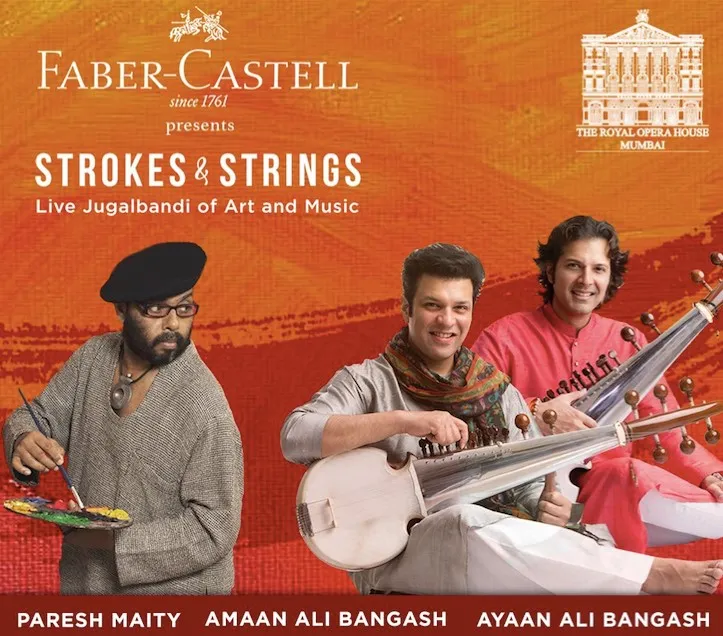
Strokes & Strings
So, one form of art can feed into another and gives life to a new creation. Photographers also capture art pieces in museums with a unique lens that ultimately converts the way it is perceived.
This jugalbandi can also extend between cultures through cross-pollination, and this is best displayed through architecture. The Art-Deco buildings in Mumbai originate from the French movement that influenced visual art, design, and architecture.
Many other signs also show a clear conceptual link between fine art and architecture, one of the most famous being Mondrian, a fine artist and a contributor to the De Stijl movement of architecture. The parallels between his art and the architecture he inspired are distinctive.
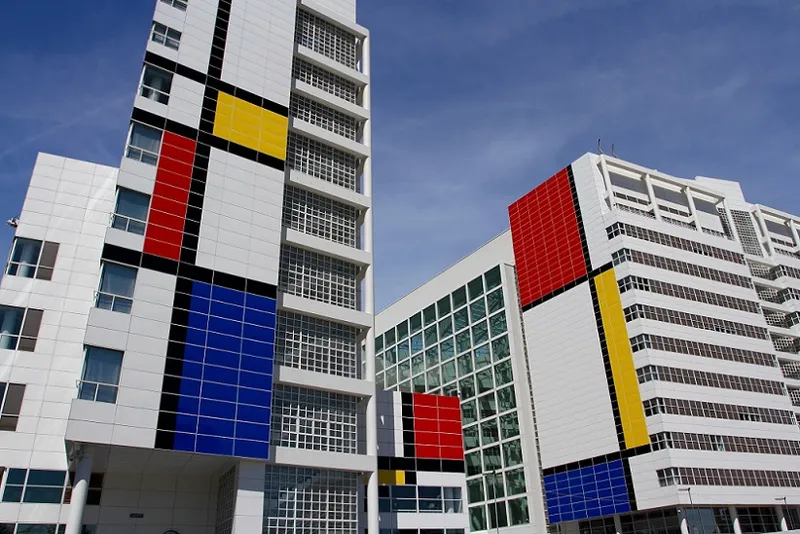
De Stijl Architecture, The Hague, Netherlands.
In the 20th century, such movements were rarely limited to just one area of design. It tended to spill over its influence across all creative fields bringing together artists, designers, architects, filmmakers etc., to put together a collective medley.
This interaction between different art forms is made even easier because most artists tend to don many caps and can also be talented in other areas like writing, theatre, performance, to name a few. This inspiration then finds its way in their expression, merging two forms and bringing two light not one both two types of skills.
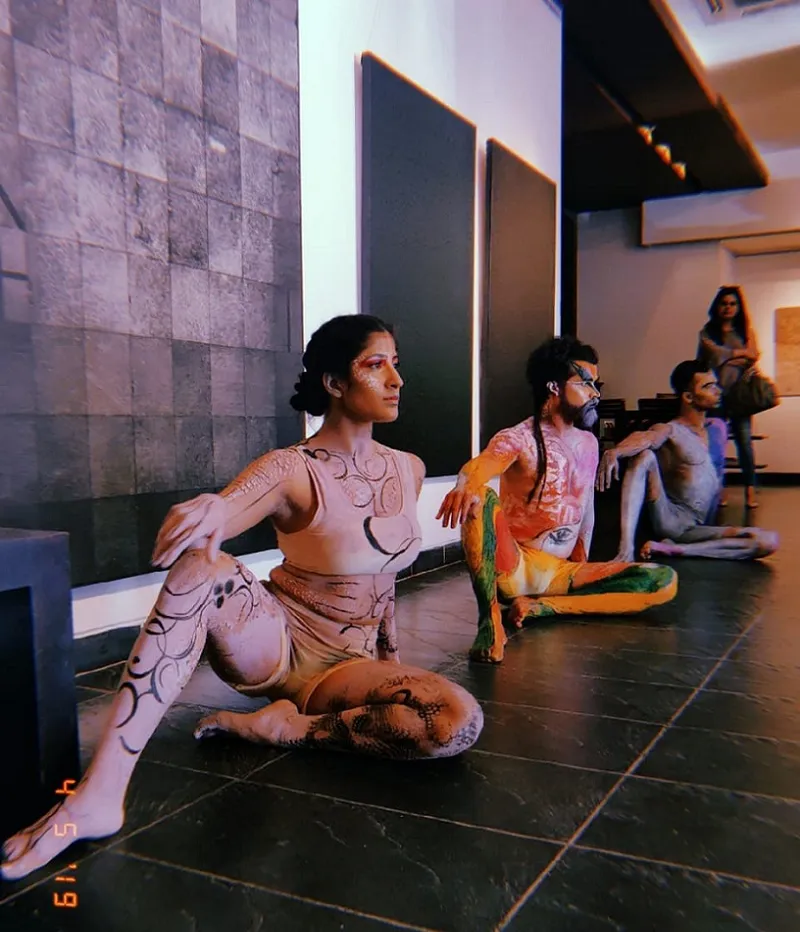
Abstract Bodies performance, Tao Art Gallery, 2019
Edgar Degas is an example of one such artist whose artworks primarily consisted of dancers performing. He deeply identified with dance and its movement and attempted to capture that impression through fine art.
Even today, some museums in Europe conduct dance performances that are then organically captured on paper by sketching artists seated around. The artist documents the impact of the dance, and this, in turn, becomes an artwork.
This is multi-layered engagement and essentially means that everybody can be an artist purely through interaction and subsequent expression.
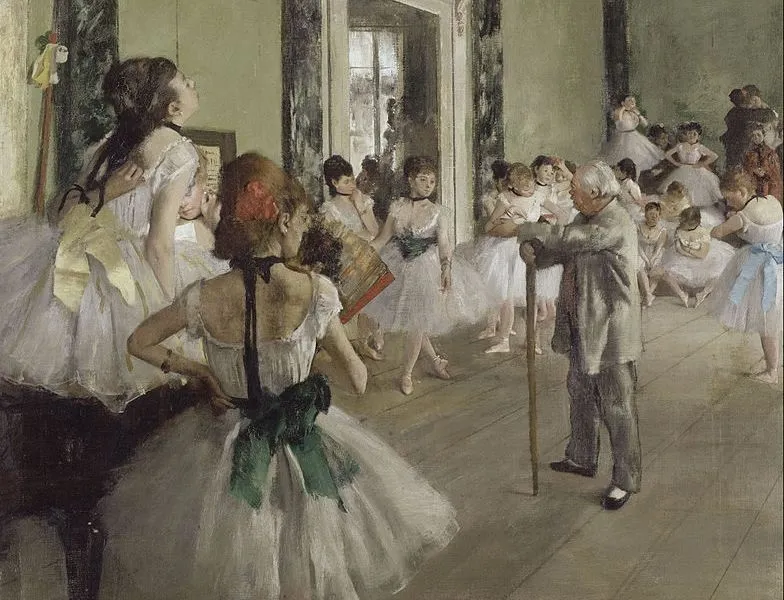
Edgar Degas, The Dance Class, 1873-1876.
The value of this is immense because it shows us how large and all-encompassing the concepts of art, design and culture are.
With the new wave of contemporary art and design in India, we see a rapid breakdown of these distinctions, with spaces exhibiting all of the arts without any specific segregation. This mutual exchange gives and lends more weightage and uniqueness to work today in place of the old-school idea of exclusivity.

Piet Mondrian, Broadway Boogie Woogie, 1942-43.
We have names like interior designer Ashiesh Shah whose products double up as practical art installations; fashion designer Amit Aggarwal whose creations are like stunning sculptures; and artists like Jitish Kallat, whose art is also philosophical and scientific discourse.
This is, after all, the true nature and intent of creativity: free and flowing ideas.
(All images provided by Sanjana Shah)
YourStory’s flagship startup-tech and leadership conference will return virtually for its 13th edition on October 25-30, 2021. Sign up for updates on TechSparks or to express your interest in partnerships and speaker opportunities here.
For more on TechSparks 2021, click here.
Applications are now open for Tech30 2021, a list of 30 most promising tech startups from India. Apply or nominate an early-stage startup to become a Tech30 2021 startup here.
Edited by Saheli Sen Gupta



